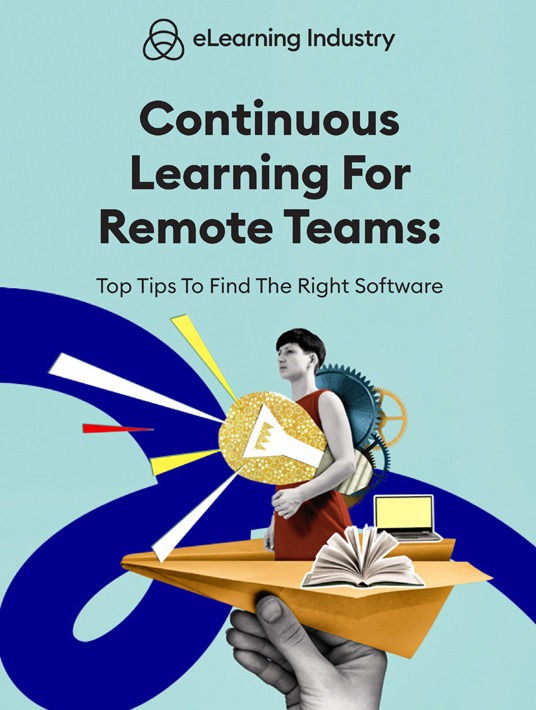7 LMS Features For Continuous Learning In The Workplace
The phrase “one size fits all” is almost always used as a negator. We quote it when we want to prove one size does not fit all. In the case of software though, it’s possible to find a product that covers unbelievably diverse requirements. This is because you can fit tons of information on a tiny chip (or app), which offers the potential for virtually limitless functionality. So, as you shop for continuous training software, which LMS features are essential for continuous learning in the workplace?

1. Customized Reporting
At work, we write all sorts of reports, and it can get tedious. Plus, continuous learning is one of the biggest report generators. If you’re not doing it for an actual assignment, you’re checking stats for improvements. This is a feature that will be used multiple times a day, all year round. Make it as stress-free as possible. Customized reports that can be generated automatically are essential to keep you sane. Because, while death by chocolate is deliciously unlikely, death by reports is certainly feasible. Especially when your L&D team is unable to make sense of the Big Data to enact change in your online training program.
2. Gamification
Very few of us are driven by a love of learning. Most of us just do it for validation and commercial gain. (Many promotions require higher levels of education.) And while the long game of better money and fancier job titles is good, trainees need motivation from day to day. Gamification helps with that, so ensure your LMS can provide it. Trainees can get a new badge for every completed unit. They can get certificates for complex training tasks. Leaderboards for test scores and speed of study can be helpful. And redeemable points are always a hit.
3. Personalization
Depending on how you grew up, having our own room was a treasure. Even if you had to share, you probably claimed a corner of the wall or cordoned off your side of the room with strong borders. As adults, we bring this same sense of territory to work. If we’re allowed to, we mark our workstations with items that are important to us. Family photos, action figures, books, or merchandise. At the software level, allow trainees to design their own avatar, background, and theme. It’s a little thing, but it helps them own the course and invest themselves in it.
4. Progress Indicators
In all training courses, it can be gratifying to see a visual measure of how far you’ve gone. It could be a sliding bar, colored dots, or any other indicator. With continuous learning, this can become an even bigger incentive, because its timeline is longer. You can look back at your chart and see how much you’ve achieved over the years. And when your training chart progresses that far ahead, it’s useful for instructors too. It helps them decide when you’re due for new content or a fresh course combination. Progress bars are useful strategy tools as well.
5. Course Selection Tools
The chart just tells you how far along you’ve gone. But you have to draft the path in the first place. Get a continuous learning LMS that makes it easy to do that. Tools may include drag-and-drop course repositories. They let trainees (and L&D experts) pull out the course they need and easily arrange them in sequence. It should also have a section where HR/admin can create “starter packs” based on interests and job description. These WYSIWYG curation tools allow both the trainee and their instructor to put a course together, or shift and mix it up in minutes. Trainees who are completely unsettled can start with a template pack (e.g. accounts for beginners). The ease of navigation means the trainee (or their mentor) can tweak it as they go.
6. Built-In Collaboration
Peers have a vast amount of experience and knowledge to share. But you need a continuous learning LMS that supports in-house collaboration to tap into it. New hires can use online forums to ask questions, while seasoned staffers can host live events or volunteer for live chat assistance to help their coworkers overcome obstacles. This also opens the feedback floodgates so that everyone can give and receive performance-boosting input.
7. Intuitive UI
All these LMS features hinge on one very important factor: usability. Employees can’t collaborate if they can’t find the built-in tools or navigate the platform. Likewise, your L&D team cannot customize reporting delivery or update content if the software is overly complex. As such, an intuitive UI is the most crucial feature to look for in your new continuous learning LMS. And it’s yet another reason why you should sign up for a free trial or demo beforehand. It gives you the chance to spot UI obstacles that may stand in your way and increase the learning curve.
Conclusion
There are multiple elements involved in continuous learning in the workplace. A solid training culture to get trainees actually involved. Software for ease of administration and evaluation. Content for comprehensive upskilling. The LMS features that can help facilitate this type of ongoing learning include customized reports and gamification. Ensure that trainees can personalize their paths, review progress at a glance, and curate their course at will. Keep it seamless and make it easy for them to achieve the outcomes and reach their potential.
Is there an LMS that offers all these must-have features and the ones on your organization’s list? Use our online directory to find the best LMS at the best price point. You can even filter results by crucial features and functions or compare your top three choices side by side. Start your search right now to choose employee development software that facilitates lifelong training.
Download our eBook Continuous Learning For Remote Teams: Top Tips To Find The Right Software to extend training to every stage of the employee journey.









